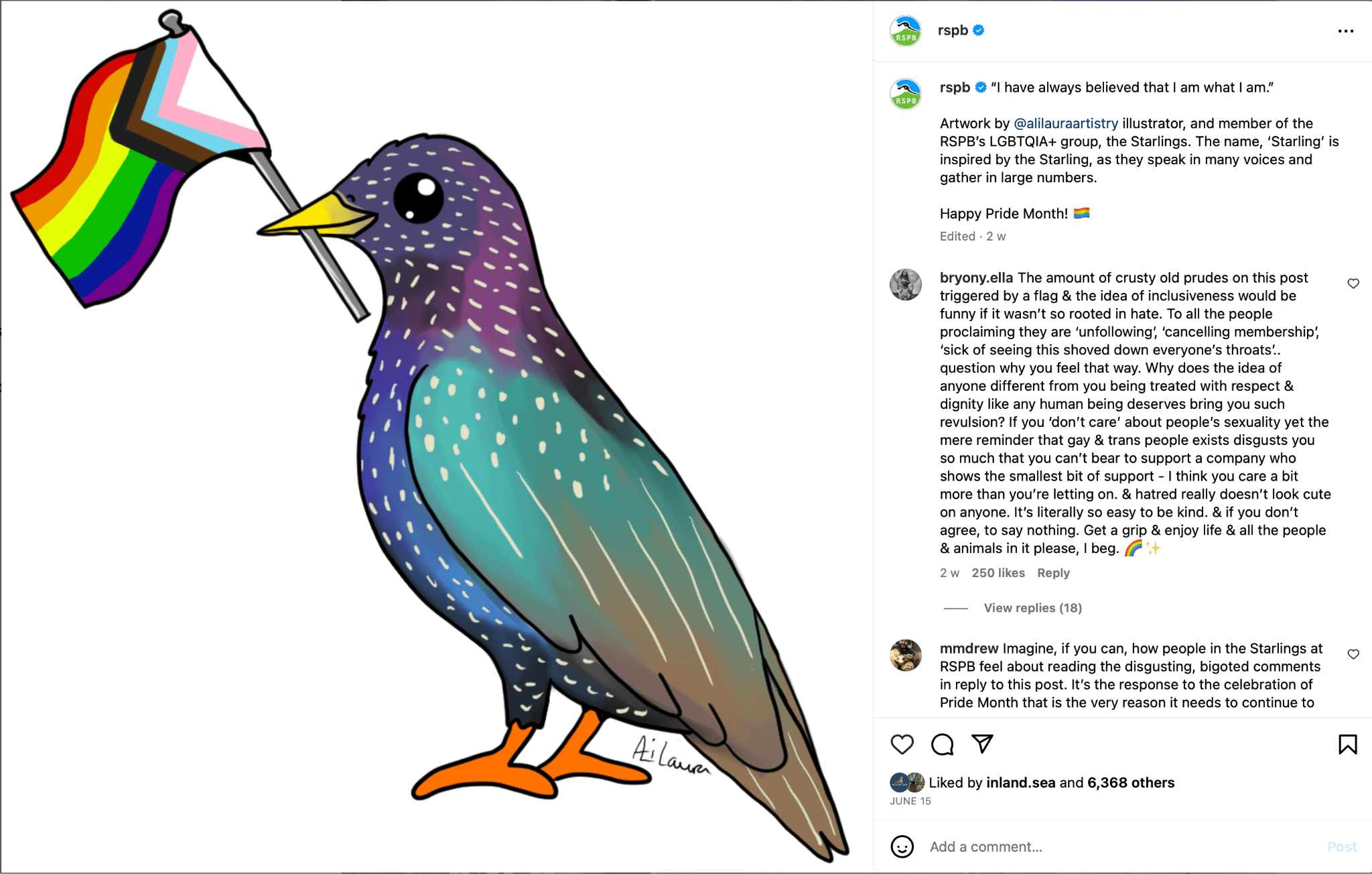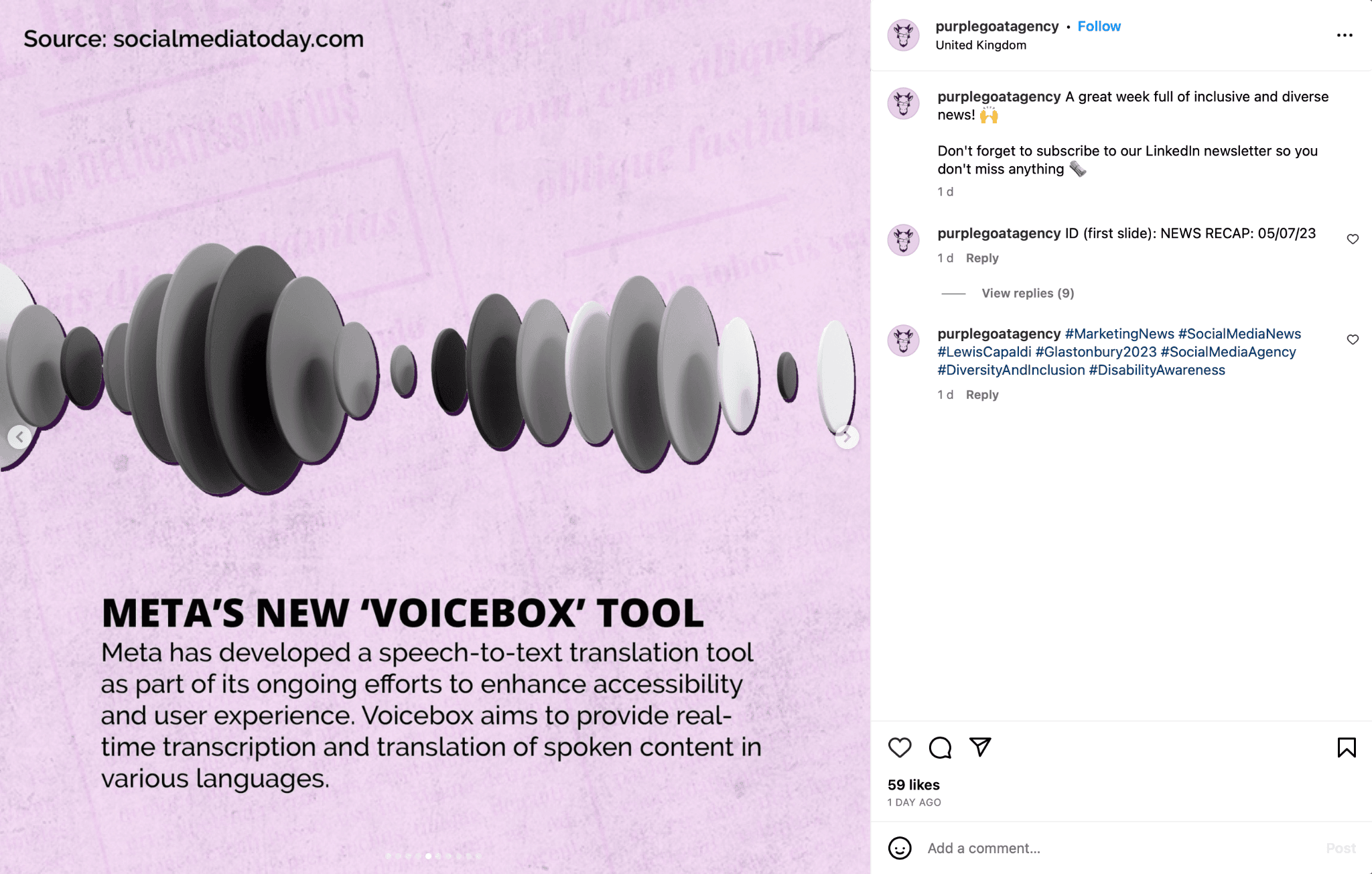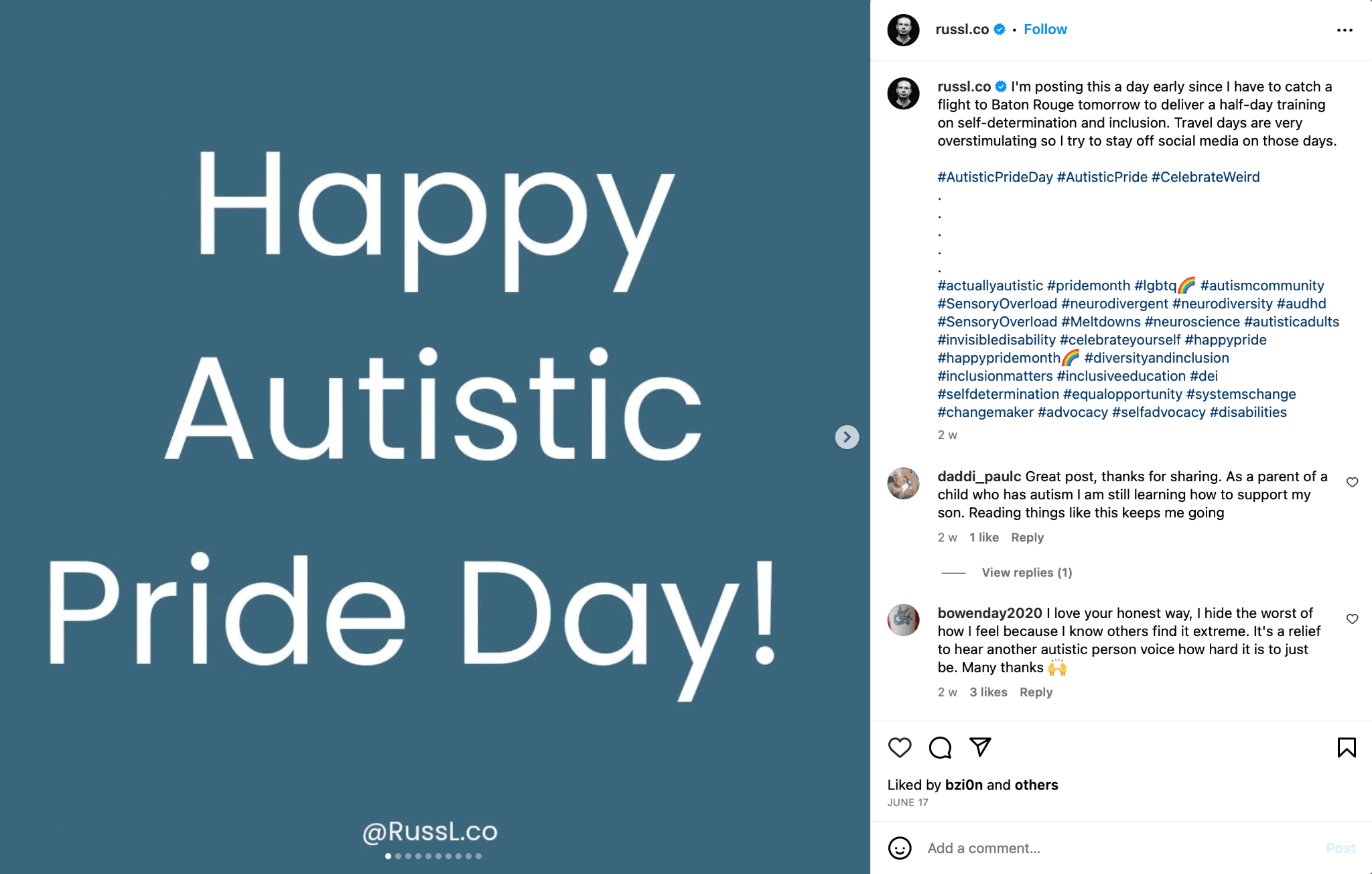Diversity, equity and inclusion (DEI) is fast becoming one of the most critical issues for today’s customers, particularly when it comes to marketing and social media. In fact, Facebook research shows that 71% of consumers expect brands to promote diversity and inclusion in their online advertising.
Moreover, studies increasingly show that consumers are more likely to trust brands that effectively embrace diversity in their advertising.
In the age of social media marketing, DEI is not only important in social media – it’s crucial. But genuine DEI can’t be accomplished by your social media manager alone – as the term suggests, it’s a collaborative effort.
Taking part in trending hashtags about diversity, changing your profile icons for Pride Month, or posting about International Women’s Day are all a great start. But your entire team should incorporate DEI into your long-term strategy to be effective and meaningful.
So what does the umbrella term DEI refer to and how can you implement it across your platforms while staying genuine and on brand? This article will explore just that.
What is DEI?
DEI is about acknowledging how people differ and ensuring everyone feels valued and welcome no matter their differences. These differences can include:
- Gender
- Age
- Race
- Sexual orientation
- Socio-economic status
- Ability
Acknowledging these differences and the barriers some consumers face opens up a conversation around diversity, equity and inclusion.
Why is DEI in social media so important?
Modern businesses are increasingly looking for ways to improve customer communications, from using effective call center management principles to investing in AI technology like customer service chatbots.
Social media is an extension of this. Your social channels offer you a chance to connect with your audience on a deeper level and should form a key part of your customer experience strategy.
Social platforms enable you to reach existing and prospective customers on a personal level. These channels should reflect who you are as a company and the diverse audience you wish to attract.

Screenshot Sourced from Instagram
It Reflects Your Company Culture
DEI isn’t simply about ensuring your team comprises diverse members or including diverse individuals in your social campaigns – although this does help.
Instead, DEI should be more ingrained in your company culture. It’s about your core values, brand voice, and how you interact with your online community. In essence, diversity, equity, and inclusion principles should be fundamental in everything you do.
It Ensures Customers Feel Seen and Heard
Customers need to see themselves in marketing material to truly resonate with a business and its messaging. Your social media presence should reflect everyone and be accessible to all.
Consider if all of your customers can identify with the images, videos, and other content you publish. Will your customers feel represented in your posts? Is their voice heard? Are you creating an open, safe environment for them?
If most of your images predominantly feature one racial group or ability, address this as a starting point.
You should also consider if your content is accessible to everyone, as this forms a significant part of the customer experience. Modern customer service teams often use a hosted call center system, incorporating interactive voice response and other accessibility features to eliminate customer barriers.
You can replicate many of these features on social media too. Start by asking yourself whether disabled users can easily access your content.
If not, you could create a barrier to future reach and growth. The good news is that offering these features with services like Meta’s voicebox tool is becoming increasingly easier.

Screenshot Sourced from Instagram
It Could Impact Your Bottom Line
Today’s consumers are more socially aware and often support companies that align with their values. In a recent survey, 59% of participants stated that they are more likely to buy from a brand that actively promotes diversity and inclusion.
Businesses must ensure their social media strategy focuses on diversity, equity and inclusion to succeed. To make a positive impact, build trust, and engage with consumers effectively, embracing people’s differences should be a top priority.
8 Ways to Incorporate DEI in Social Media
If you’re wondering how to get more Instagram followers or improve your reach, you should consider your DEI strategy.
While DEI should be embedded in company culture and integrated throughout the organization, your social media presence is an excellent place to start.
Including a well-considered DEI strategy as part of your social media content plan is essential in today’s market. That said, it’s vital to avoid virtue signaling. Ensure every action, message, and visual genuinely intends to promote diverse representation and inclusive practices.
With that in mind, here are eight ways to incorporate DEI in social media strategy.
Consider Your Core Values
Before crafting your DEI social media strategy, you must first understand your organization’s values. At the end of the day, audiences will soon call you out if your brand’s practices and policies don’t align with social media claims.
What your brand says and does on social media should directly reflect your core values and commitments.
Consider if your organization has an overarching policy or strategy for DEI. This is not just about marketing and social media but the bigger picture.

Screenshot Sourced from Instagram
Your DEI strategy may include education for employees around certain topics like how to support neurodiverse colleagues, inclusive hiring policies, or commitments to representation of minorities in your advertising campaigns.
Build a Diverse Team
Ultimately, diversity in social media starts from within the company itself. Hiring diverse individuals will significantly benefit your business. Moreover, it will help your social media team understand the subtle nuances of your target audience.
Employing people who deeply understand your target audience, their barriers, and their expectations will ensure you are better equipped to create content that connects and inspires your customers.
Not only that, but a diverse team will generate more diverse ideas. Diverse individuals bring new and innovative perspectives that otherwise may not have come to light.
Their input can also guide your DEI social media strategy. This can help you avoid discrimination and feeding stereotypes that even the most well-meaning campaigns can present.
If you are a global company looking to hire a diverse team, you could also set up a dedicated recruitment website to attract suitable candidates worldwide. For example, a company looking to hire from Israel could buy co.il domain to appeal to candidates in that location and enhance the cultural diversity of their team.
Don’t forget to show off your team, too! Social media is a brilliant platform for sharing news about your team’s hard work and workplace policies that support them.

Screenshot Sourced from LinkedIn
This diversity should also extend to the digital creators you work with. Many companies work with social media influencers and content creators to leverage user-generated content (more on this later). If you do, ensure your commitment to representation carries over into this. Work with diverse influencers and team members and diverse content will follow.
Create Authentic Content
No brand or organization can have a say on every topic. Although many will require you to speak up, having a meaningful and authentic voice on every issue that might impact your audience is virtually impossible.
To ensure followers value your voice when it comes to DEI, prioritize content that is authentic and meaningful. Your brand must be credible as staying true to your values builds brand authenticity.
Simply using trending hashtags or adding a rainbow to your logo during Pride month is not enough. Be careful that your DEI strategy does more than scratch the surface.

Screenshot Sourced from Instagram
Strong values and a clear vision for sharing those values with your audience build trust and respect for your brand. However, you should carefully consider your company’s role in larger conversations and what your audience expects from you. Most importantly, ask yourself if you are living up to the values you claim to uphold.
Use Tone of Voice Effectively
When it comes to creating content and writing social media marketing copy, tone of voice is hugely important. Your content should make consumers feel welcome and create a sense of belonging.
The last thing you want to do is isolate followers. So, your social media content shouldn’t necessarily highlight how users differ from one another. Instead emphasize what brings them all together as one community.
Use inclusive language that promotes diversity, equality and inclusion and stay abreast of changes in language to avoid using offensive terminology. There are many resources that provide guidance on how to write about race, disability, sexuality, and gender so do your research.
Make your Communications Accessible
Modern technology has allowed us to optimize various tasks, increase productivity, improve communications, and so much more. Whether you’re sending a fax from mobile to update an influencer’s contract or looking for a set-and-forget social media solution, chances are there’s a tool out there to help you.
However, the use of technology to increase accessibility in social media is under-utilized.
While companies often focus on ensuring their content contains a fair representation of their target audience and the wider population, accessibility is often overlooked. When considering DEI, we can’t ignore the importance of creating accessible content.
This means ensuring that everyone can read, consume, and engage with your content regardless of their abilities by removing potential blocks for users.
Consider adding alt text to images to assist visually impaired users or adding closed captions to video content for the hearing impaired. International companies must also consider how to overcome language barriers.
Consider these other tips for ensuring your content is inclusive:
- Using simple and legible fonts
- Considering use of color for readability
- Capitalizing hashtags to make them easier to read e.g. #InclusionAndDiversity versus #inclusionanddiversity
Leverage User Generated Content
As we mentioned previously, it’s worth working with a diverse group of social media influencers and content creators. Moreover, you can leverage content from your own followers who represent different demographics. This will help your target audience to feel seen while showcasing your company’s core values.
With that in mind, collaborate with users who will create curated content for your brand. They could represent an audience that you hope to engage with more or offer a behind-the-scenes glimpse into your brand’s inclusive culture.
For example, a communications company may ask an influencer to create content that explains VoIP caller meaning and benefits for disabled users.
Another way to leverage UGC is to encourage your followers to use a particular hashtag that connects with your brand. Users searching the hashtag will see the diverse nature of the posts and how they relate to your brand. You can then use some of these posts on your own platform to further solidify your commitment to diversity.
Showcase Your Commitment to DEI
It’s all well and good having a well-written DEI strategy or corporate policy on paper. But what will really have an impact on your audience is actually showing them how you uphold these values.
Use your social media channels to highlight the work you’re doing when it comes to diversity, equity and inclusion.

Screenshot Sourced from Instagram
This might include sharing how you provide education on diversity for all of your employees or how your team volunteers for a particular cause. Highlighting the work you are doing will show your customers that you mean what you say and that these issues are genuinely important to you.
Regularly Revisit Your Strategy
Your social media team is likely tracking and monitoring a variety of social media metrics. But where does DEI fall into that?
DEI isn’t something that can be done once and forgotten about. The principles of diversity, equity and inclusion should be an ongoing focus for any business. As such, all of your content should be reviewed regularly with a DEI lens.
Mistakes may be made, usually unintentionally, and you may not get all of your content “right”. Some may come off as insensitive or even offend some users. It’s important to have honest conversations when this happens and implement measures to prevent it happening again.
When developing campaigns and creating content, ask yourself:
- Are we using insensitive or inappropriate language?
- Does this content marginalize a particular culture?
- Are we using language that has racist/sexist origins?
- Is this content likely to cause offense to any particular group?
Putting systems in place to review your content with a DEI focus will reduce the likelihood of offending consumers and build more trust and respect as a brand. Be prepared to make some mistakes, but ensure you have a plan for how to improve in the future.
Final Thoughts on Inclusion in Social Media
If you don’t already prioritize diversity, equity and inclusion as part of your social media strategy, now is the time to start.
Ensure that DEI permeates your whole organization and is not just a tick box exercise for the marketing team.
Ultimately, we want our users to feel welcome, valued, and understood. A social media presence that doesn’t represent them or is inaccessible is likely to do the opposite.
Get to know your target audience, drill down on your core values and, most importantly, mean what you say. Your social media should reflect who you are as a company, so start by putting diversity, equity and inclusion at the heart of your core values and your content will follow.


